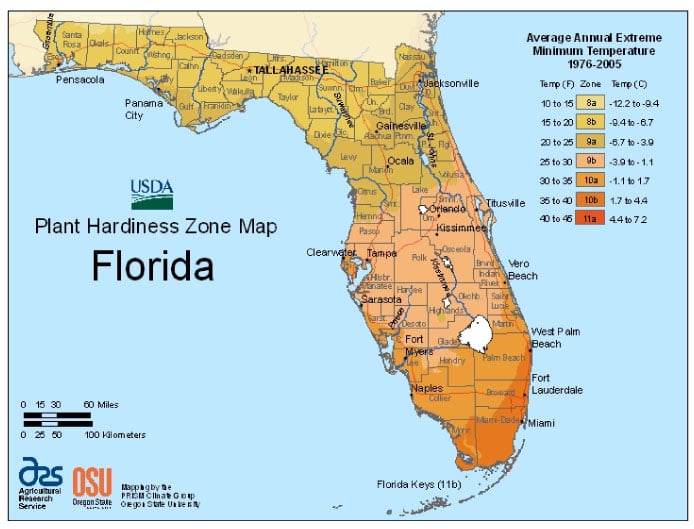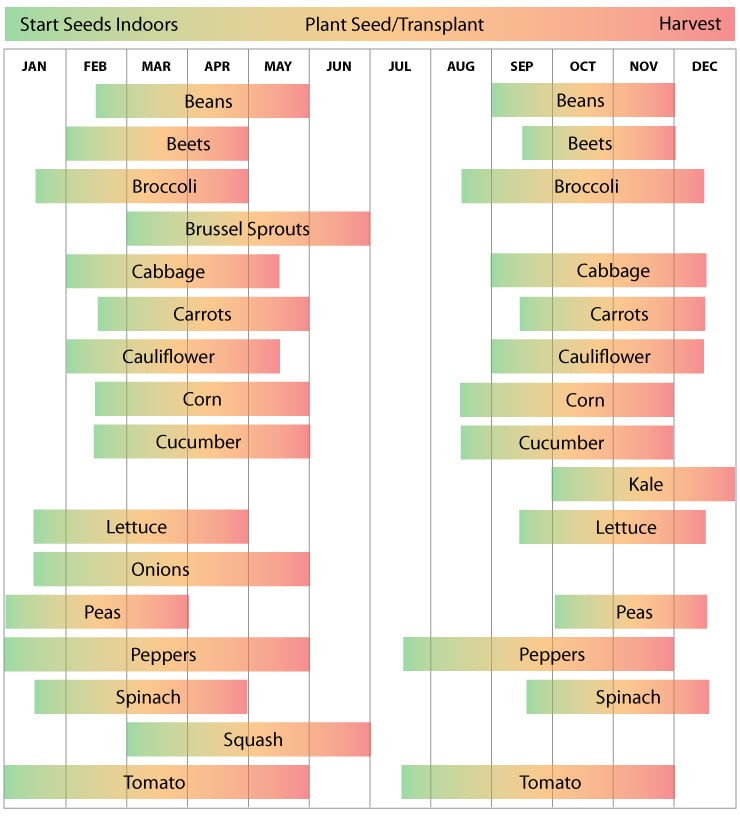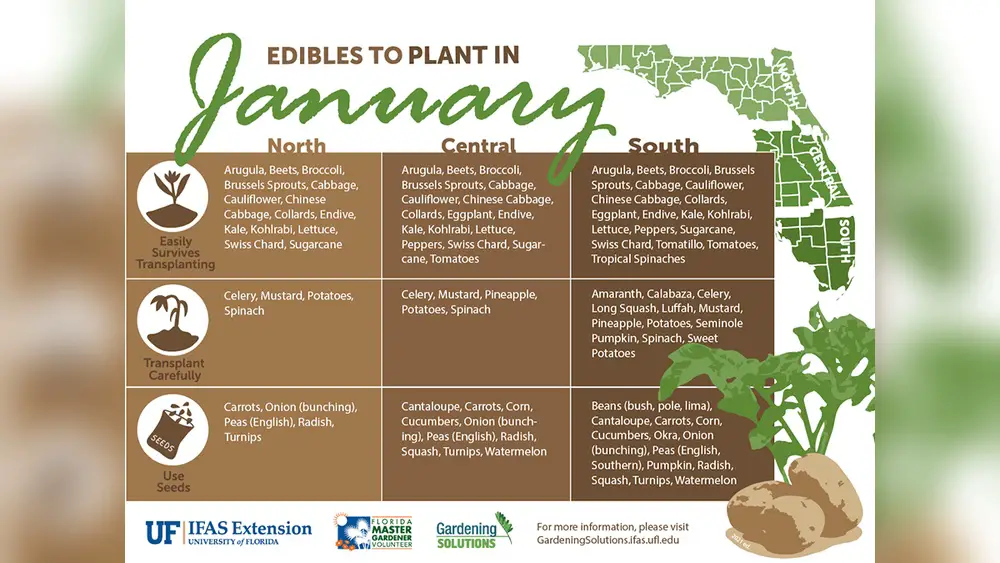Are you ready to enjoy fresh, homegrown vegetables right from your own garden in Florida? Knowing the best time to plant your veggies can make all the difference between a bountiful harvest and a disappointing one.
Florida’s unique climate means planting at the right moment is key to helping your vegetables thrive. Whether you’re a beginner or have some gardening experience, this guide will show you exactly when to plant so your garden flourishes. Keep reading to discover the perfect planting windows for popular vegetables and get tips that will help you grow a healthy, productive garden all year long!

Credit: www.revivalgardening.com
Planting Seasons In Florida
Florida’s unique climate allows gardeners to grow vegetables almost year-round. Understanding the planting seasons helps maximize harvests and avoid weather stress. Each season offers distinct advantages for different vegetable types. Knowing which crops suit each season leads to healthier plants and better yields.
Best Fall Vegetables
Fall is ideal for cool-season vegetables in Florida. Plant broccoli, lettuce, carrots, and radishes in October. These crops thrive in cooler temperatures and shorter days. Brussels sprouts also grow well during fall months. Starting your fall garden early ensures a steady harvest before winter arrives.
Summer Crop Options
Summer in Florida is hot and humid, but some vegetables handle the heat. Sweet potatoes, beans, and okra grow well in summer. Long beans climb trellises and produce a long harvest. Heat-tolerant tomato varieties like Everglaze also do well. Watering and shade help protect plants from intense sun.
Spring Planting Tips
Spring offers warm days and cooler nights. Plant cucumbers, peppers, and tomatoes in early spring. Starting seeds indoors or in small containers helps young plants adjust. Transplant them outside once temperatures rise consistently. Spring planting takes advantage of the warming soil and longer daylight.
Winter Gardening Possibilities
Florida winters are mild, allowing winter gardening in many areas. Leafy greens like collards and lettuce grow well in winter. Use frost protection on colder nights for sensitive plants. Winter gardens benefit from fewer pests and diseases. This season extends your growing opportunities through the year.

Credit: www.ufseeds.com
Vegetables That Thrive In Florida
Florida’s climate creates unique challenges for growing vegetables. Hot temperatures and high humidity can stress plants. Pests thrive in warm, moist environments. Preparing soil correctly is essential for healthy growth. Gardeners must adapt to these conditions for a successful harvest.
Understanding the climate issues helps you plan better. Choosing the right strategies reduces problems and improves yields. Here are key areas to focus on when planting vegetables in Florida.
Managing Heat And Humidity
Florida’s heat can damage many vegetable plants. Use shade cloths during the hottest hours to protect crops. Water early in the morning to reduce evaporation and fungal growth. Select heat-tolerant vegetable varieties for better results. Proper air circulation helps lower humidity around plants. Mulching keeps soil cool and retains moisture.
Pest Resistance Strategies
Pests multiply quickly in Florida’s warm climate. Plant pest-resistant vegetable varieties to reduce damage. Use natural predators like ladybugs to control harmful insects. Regularly check plants for signs of pests and remove affected leaves. Avoid overwatering, which can attract pests and cause root problems. Crop rotation helps prevent pest buildup in soil.
Soil Preparation For Florida
Florida soil often lacks nutrients needed for vegetables. Test soil before planting to know its condition. Add organic matter like compost to improve soil structure and fertility. Use sandy soil amendments to enhance drainage. Maintain soil pH between 6.0 and 7.0 for most vegetables. Proper soil preparation ensures strong roots and healthy plants.
Climate Challenges And Solutions
Starting seeds and transplants is a crucial step for a successful vegetable garden in Florida. It allows gardeners to control the growing environment early on. This method helps young plants develop strong roots before moving outdoors. Proper care during this stage leads to healthier plants and better yields.
Container Seed Starting
Use small containers or seed trays for starting seeds indoors. Fill them with a light, well-draining seed-starting mix. Moisten the soil before planting the seeds. Keep containers in a warm place with indirect sunlight. Maintain consistent moisture but avoid waterlogging. Once seeds sprout, provide plenty of light to prevent leggy growth.
Timing For Transplanting
Transplant seedlings outdoors when they have at least two sets of true leaves. The soil should be warm enough for the vegetable type. In Florida, early fall and late winter are ideal for many crops. Avoid transplanting during the hottest months to reduce plant stress. Watch for local frost dates and heat waves to choose the best time.
Hardening Off Plants
Before planting seedlings in the garden, harden them off gradually. Start by placing them outside in a shaded area for a few hours. Increase the time and sunlight exposure over 7 to 10 days. This process helps plants adjust to outdoor conditions like wind and sun. Proper hardening reduces transplant shock and improves survival rates.

Credit: www.ufseeds.com
Frequently Asked Questions
What Month To Plant Vegetables In Florida?
Plant cool-season vegetables in Florida during October for best growth. Start warm-season crops in early spring or summer for optimal results.
What’s The Easiest Vegetable To Grow In Florida?
Sweet potatoes, long beans, lettuce, and collard greens grow easily in Florida’s heat and humidity. They need minimal care and yield well.
What Can I Plant In October In Florida?
Plant cool-season vegetables like broccoli, lettuce, carrots, Brussels sprouts, and radishes in Florida during October.
Can I Plant Tomatoes In September In Florida?
Yes, you can plant tomatoes in September in Florida. Choose heat-tolerant varieties for better growth. Start seeds indoors or in small containers for best results.
Conclusion
Planting vegetables at the right time boosts growth and yield. Florida’s climate favors fall planting for many cool-season crops. Starting seeds or transplants in September or October works well. Choose easy-to-grow vegetables like sweet potatoes, beans, and leafy greens. These thrive in Florida’s heat and humidity with little care.
Remember to water regularly and watch for pests. Planning your garden by season helps you enjoy fresh vegetables year-round. Happy gardening!

